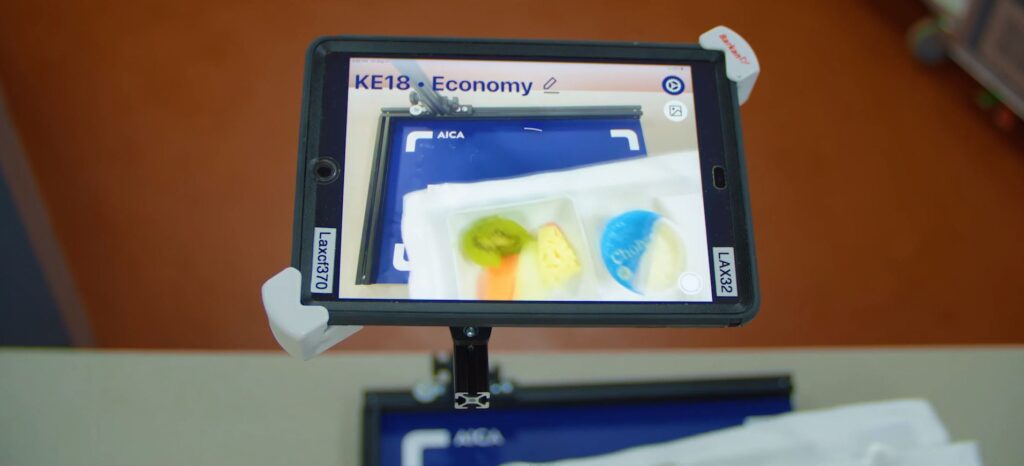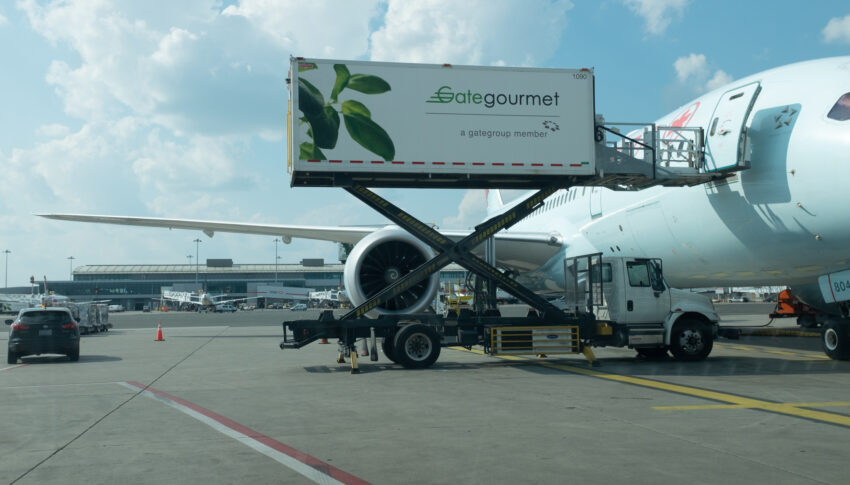A long running challenge for airlines and for caterers is how to improve their meal services in terms of customer satisfaction, operational efficiency, and sustainability. Yet since there are no direct links from passenger to caterer, information flows can be complicated, with flight attendant feedback often subjective and an understandably lower priority than their safety and service roles. We sat down with LSG Group executives to discuss two key digital tools they’re using to improve the situation.
One key tool is AICA, an AI-enabled, hardware agnostic scan-and-process system that analyses what’s left on passengers’ meal trays to enable swift and effective changes to be made where needed if items or entire meals are returning uneaten.
“Each item is photographed once it returns to our facility,” LSG Group head of digital agenda Robin Sippel tells us. “The data is then uploaded to a cloud and analysed by artificial intelligence. This provides us with information about which components were eaten, and which were left unfinished. From there, we can conclude how popular each dish was. We combine these insights with passenger and flight data to make recommendations.”
AICA is in many ways a tool for a wider consulting and advisory product, and can be adapted to the specific needs of a specific airline — or even a specific route. A smaller station with a lower throughput might use a more manual process where a tray is placed under a stand with an iPad attached. A larger hub might see a dedicated camera installed over the inbound tray conveyor belt for higher volume and more automated scanning.

“Our fact base and our knowledge advantage enables us to make improvements together with the airline from consumption forecasts and quality control to menu optimisation and service changes,” Sippel says. “Firstly, the passengers will be more satisfied with their meal because they will be served what they really want. They leave the aircraft as happy customers. Secondly, the airline can save costs by optimising their loading and either save fuel or load more cargo. Finally, less food will be disposed of and there will be less packaging waste generated.”
With nearly a dozen airlines’ trays analysed by the system, aggregated data show that more than half of meals on longhaul flights are not fully eaten, with more than seventy kilos of food waste generated per flight, representing thousands of Euros of opportunities per aircraft to make changes, such as removing elements or changing meal proportions.
“One airline changed a starter, a gazpacho, as more than sixty percent of loaded meals were not eaten,” Sippel explains. “Another carrier decided to replace a single food component — a tomato on a hot breakfast — as half of the passengers did not touch it. Also, there was one airline that loaded more main courses with fish as those dishes were rarely returning uneaten.”
As part of its work integrating tools like AICA into airline operations, LSG uses its wider Inflight Suite to plan concepts, design menus, rotate equipment, manage galleys, work through outstation warehousing logistics, and even forecast budgets.

“It offers full control and approvals for menu loading from the airline, broken down to single flights — as simple and easy as online shopping, with an intuitive user interface,” LSG director of IT business services Michael Ortwein tells us. “An automated data flow from the LSG Group’s forecast platforms for complimentary catering and onboard retail and even recommendations from AICA analysis delivers input to calculate meal forecasts and order accordingly to the passenger’s needs, for example the consideration of special meals or pre-order concepts and their impact on loading.”
Key to Inflight Suite is its integration of airline data with caterers, yet isolating that data technically so that confidential airline information remains where it should.
“Furthermore, it brings digitalisation to a new level. Not only does it facilitate future menu planning, but it also grants airlines real-time access to their current data, and a comprehensive digital archive of past menus and meal offerings. This ensures that airlines stay ahead of the curve and maintain a rich history of their inflight offerings,” Ortwein concludes.
Author: John Walton
Published 06 February 2024




